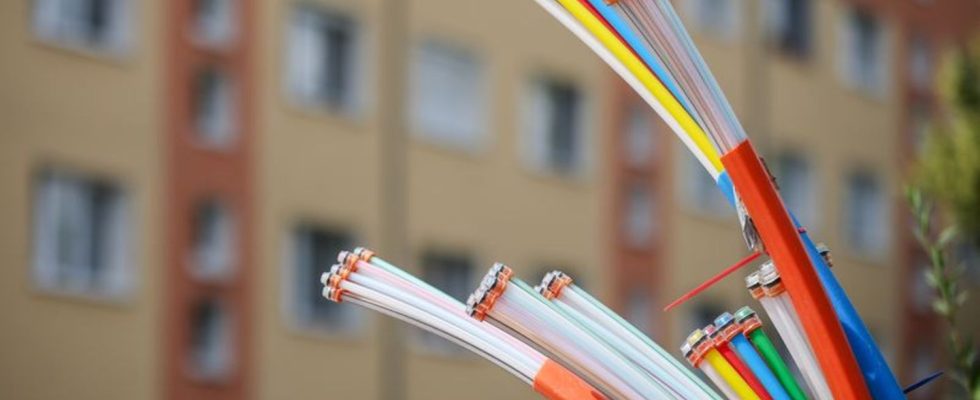grid expansion
Every third German household can use fiber optics
Fiber optic cables protrude from the base of a control cabinet. When it comes to broadband expansion, the situation now looks significantly better than it did two years ago. photo
© Jan Woitas/dpa
When it comes to digitalization, Germany lags behind other industrialized countries in many areas. When it comes to broadband expansion, however, the situation looks significantly better than it did two years ago.
The figures show that fiber optic expansion is making rapid progress after a long phase of stagnation. A year ago, around one in four households (26 percent) had fiber optics in the street; at the end of 2020 the figure was only 17.7 percent. The fiber optic expansion has also contributed to Germany now moving into the top spot in the Index for the Digital Economy and Society (DESI). In this European comparison, the Federal Republic is now in fourth place when it comes to the supply of telecommunications services. In 2021 Germany was in 11th place.
Fiber optic internet is significantly faster than connections over telephone lines (VDSL). Although television cables can also achieve gigabit speeds, fiber optics are considered more stable. If many neighbors surf the Internet and stream films in the evening, the data transfer rate does not drop as much as with TV cables.
Westfal: Need optimal framework conditions
According to the association’s assessment, the pace at which further fiber optic expansion will proceed depends on the general conditions. Fiber optic coverage of between 46 and 60 percent could be achieved by 2025. Breko President Norbert Westfal explained: “In order to maintain the current pace, we need optimal conditions for the strong internal fiber optic expansion.” Federal, state and local governments should reduce bureaucracy by promoting the comprehensive digitalization of approval processes.
Hurdles on the way to achieving the optimal value include the acute shortage of skilled workers, increased expansion costs and reluctance to buy due to continued high inflation. “The greatest threat to rapid nationwide fiber optic expansion is currently the announced or actual double fiber optic expansion by Telekom.” According to a study by Breko, all regional states were affected by July 2023.
Telekom always rejects the allegations regarding double expansion. On the one hand, there are a number of regions in which Telekom’s competitors have laid a second fiber optic cable, even though the respective street was already supplied by Telekom. In addition, the market has to endure competition when several providers compete for customers with their own fiber optic lines at the same time.

